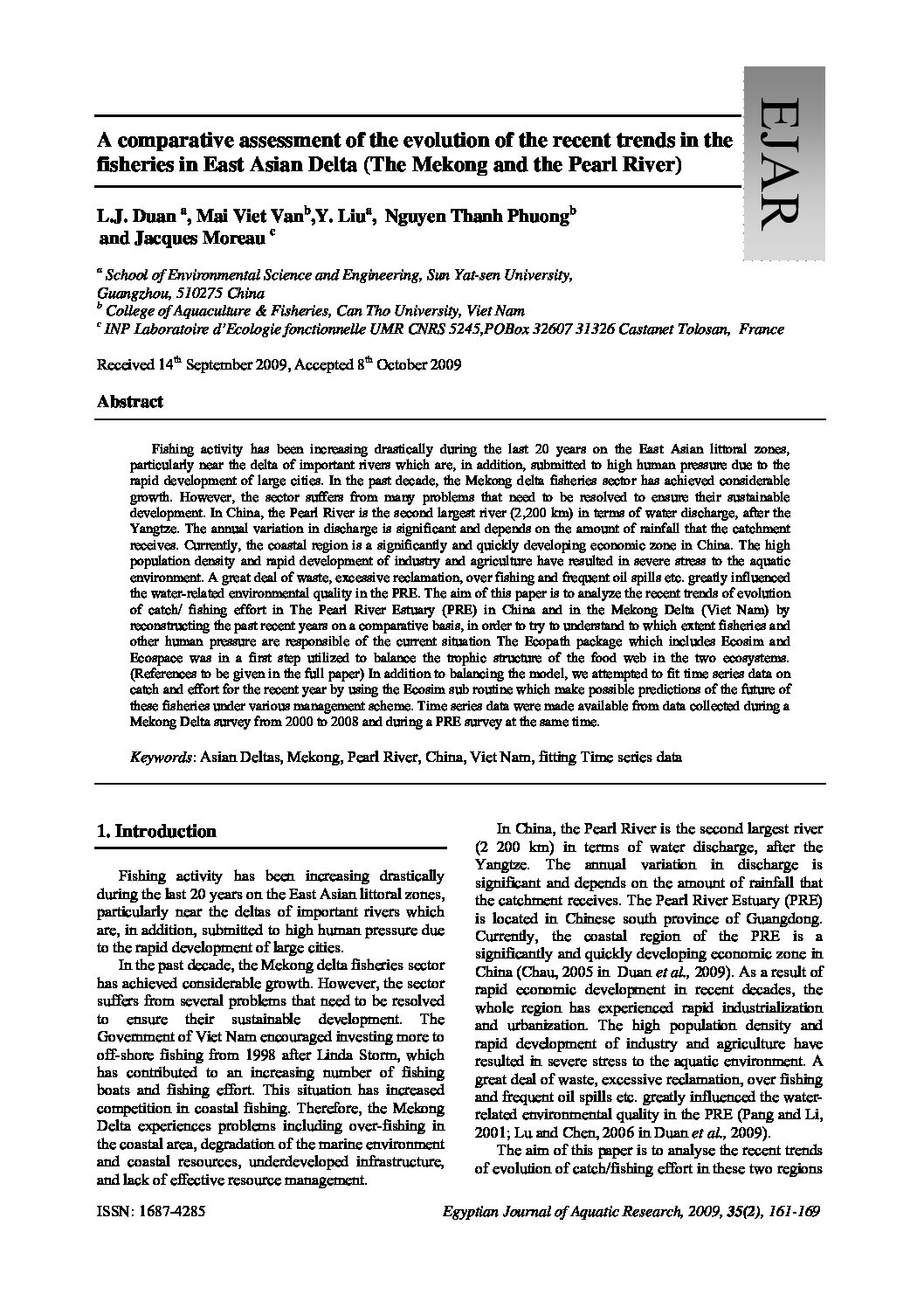Categories
vol-35A comparative assessment of the evolution of the recent trends in the
fisheries in East Asian Delta (The Mekong and the Pearl River)
L.J. Duan a
, Mai Viet Vanb
,Y. Liua
, Nguyen Thanh Phuongb
and Jacques Moreau c
a
School of Environmental Science and Engineering, Sun Yat-sen University,
Guangzhou, 510275 China
b
College of Aquaculture & Fisheries, Can Tho University, Viet Nam
c
INP Laboratoire d’Ecologie fonctionnelle UMR CNRS 5245,POBox 32607 31326 Castanet Tolosan, France
Received 14th September 2009, Accepted 8th October 2009
Abstract
Fishing activity has been increasing drastically during the last 20 years on the East Asian littoral zones,
particularly near the delta of important rivers which are, in addition, submitted to high human pressure due to the
rapid development of large cities. In the past decade, the Mekong delta fisheries sector has achieved considerable
growth. However, the sector suffers from many problems that need to be resolved to ensure their sustainable
development. In China, the Pearl River is the second largest river (2,200 km) in terms of water discharge, after the
Yangtze. The annual variation in discharge is significant and depends on the amount of rainfall that the catchment
receives. Currently, the coastal region is a significantly and quickly developing economic zone in China. The high
population density and rapid development of industry and agriculture have resulted in severe stress to the aquatic
environment. A great deal of waste, excessive reclamation, over fishing and frequent oil spills etc. greatly influenced
the water-related environmental quality in the PRE. The aim of this paper is to analyze the recent trends of evolution
of catch/ fishing effort in The Pearl River Estuary (PRE) in China and in the Mekong Delta (Viet Nam) by
reconstructing the past recent years on a comparative basis, in order to try to understand to which extent fisheries and
other human pressure are responsible of the current situation The Ecopath package which includes Ecosim and
Ecospace was in a first step utilized to balance the trophic structure of the food web in the two ecosystems.
(References to be given in the full paper) In addition to balancing the model, we attempted to fit time series data on
catch and effort for the recent year by using the Ecosim sub routine which make possible predictions of the future of
these fisheries under various management scheme. Time series data were made available from data collected during a
Mekong Delta survey from 2000 to 2008 and during a PRE survey at the same time.
Keywords: Asian Deltas, Mekong, Pearl River, China, Viet Nam, fitting Time series data







